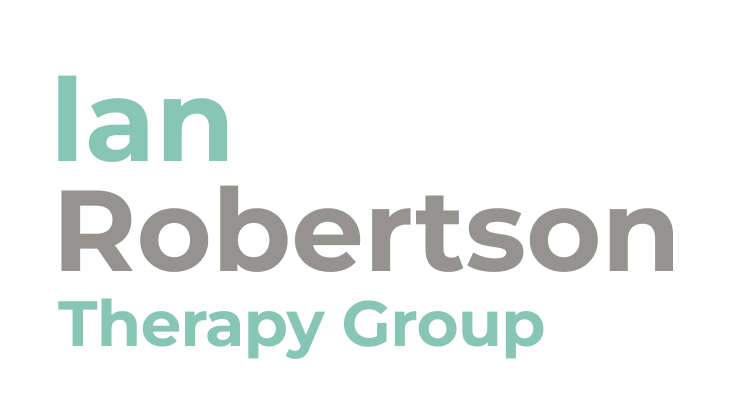
Introduction
Have you ever wondered why anger can feel so overpowering or difficult to control? For many people, intense anger or rage is not simply about the present moment. It is often rooted in unhealed trauma. At Ian Robertson Therapy Group, we often see clients who come to therapy feeling frustrated with their inability to manage anger, only to discover that beneath it lies a history of fear, pain, and emotional survival.
In this blog, we explore how trauma can shape the way anger and rage are expressed. By viewing anger through a trauma-informed lens, we can begin to understand it not as a character flaw but as a protective response that once served a purpose but now causes distress.
Defining Anger and Rage
Although the terms anger and rage are often used interchangeably, they describe different levels of emotional intensity. Anger is a natural reaction to perceived injustice or threat. When expressed in a healthy way, it helps us set boundaries and protect ourselves. Rage, on the other hand, is uncontrolled and explosive anger that can feel overwhelming for both the person experiencing it and those around them.
For individuals with a history of trauma, anger often becomes intertwined with fear and helplessness. Childhood experiences such as abuse, neglect, or rigid and authoritarian parenting can disrupt emotional regulation and attachment. This can lead to reactive or disorganized attachment patterns, making it difficult to manage emotions effectively in adulthood.
When early environments are unsafe, anger may develop as a protective response. Over time, this survival mechanism can become automatic, triggering reactions even in situations that do not call for them. Understanding this connection is the first step toward healing.
How Trauma Shapes Anger
Trauma leaves lasting imprints on both the body and mind. When a person experiences trauma, the brain moves into survival mode by activating the fight, flight, or freeze response. This involves the amygdala, which detects and signals danger, and the prefrontal cortex, which is responsible for emotional regulation and decision-making.
In individuals with unresolved trauma, the amygdala often becomes hypersensitive, sending frequent danger signals even when there is no real threat. At the same time, the prefrontal cortex struggles to keep emotions balanced. This imbalance can lead to heightened arousal, impulsive reactions, or sudden bursts of anger.
Trauma expert Peter Levine writes, “By beginning to get a sense of what healthy aggression feels like, the extremes of numbness and rage can begin to give way to a healthier middle ground.” In other words, anger itself is not the problem. It is the body’s way of expressing unmet needs or unprocessed pain.
If you are interested in exploring how past experiences shape emotional responses, you may enjoy reading our blog The Blame Game: Are You a Projector or a Reflector?.
Recognizing Trauma Responses in Anger
Anger that stems from trauma often appears in specific patterns. You might notice:
- Overreacting to minor frustrations
- Feeling chronically irritable or “on edge”
- Becoming numb until something triggers intense emotion
- Experiencing shame or regret after an outburst
These are not signs of weakness, they are signs of unresolved trauma responses. When anger feels uncontrollable, it may be because the nervous system is still wired for survival, reacting to perceived threats long after the real danger has passed.
If this resonates with you, our post How Anxiety in Parents Can Affect Children explores how emotional patterns can be carried forward and affect future relationships.
Healing the Roots of Rage
Healing from trauma requires more than learning to suppress anger. It involves understanding where it comes from and why it shows up. In therapy, individuals can explore the origins of their emotional reactions, process unresolved experiences, and develop new tools for emotional regulation.
Therapeutic approaches such as polyvagal therapy, structural dissociation work, and mindfulness-based trauma therapy help retrain the nervous system to feel safe again. Through this process, clients learn to reconnect with their bodies, recognize triggers, and express emotions in more balanced and constructive ways.
As trauma is processed, anger often begins to shift. What once felt like uncontrolled rage can transform into healthy assertiveness, confidence, and clarity. Instead of becoming destructive, anger becomes a powerful source of energy for setting boundaries and maintaining emotional well-being.
To further understand how emotional regulation connects to healing, you may find our blog Understanding Your Relationship Attachment Style helpful.
Conclusion
Anger is not the enemy, It is a messenger. A sign that something within you needs attention, healing, or compassion. When we view anger and rage through a trauma-informed lens, we can begin to see them not as flaws, but as responses born from pain and survival.
At Ian Robertson Therapy Group, we help clients unpack the deeper roots of anger and develop tools to respond with awareness rather than reaction. If you would like to explore how trauma may be shaping your emotional responses or would simply like to learn more, please fill out the form below. We are here to help you find understanding, safety, and balance.











